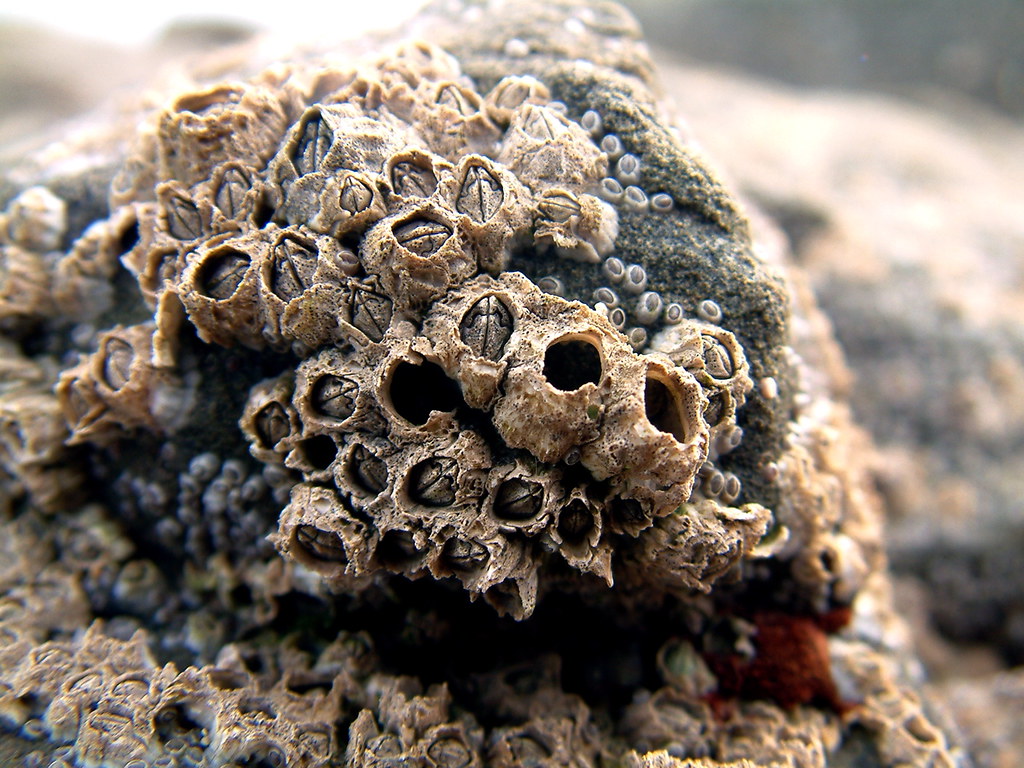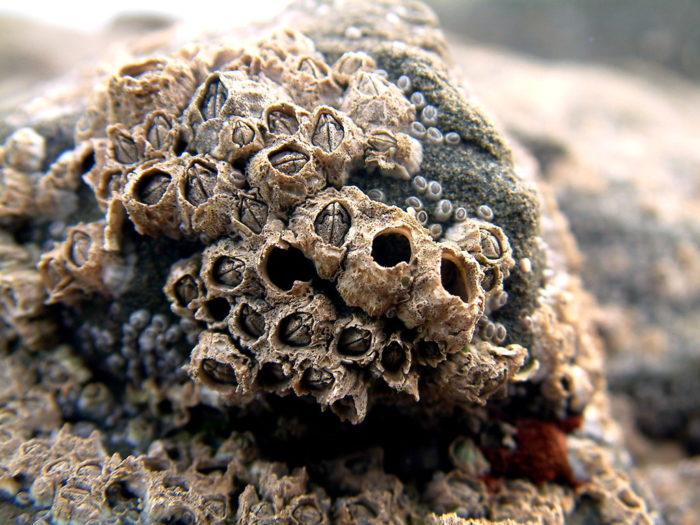
Sea Wonder: Barnacle

Photo by flickr user Oli
Barnacles might not be the most exciting animals in the ocean, but they are integral to healthy marine ecosystems! The world’s ocean and waterways are home to more than 1,400 species of barnacles. So what are they and why are they wondrous?
Appearance
Barnacles are crustaceans, part of the same family as crabs, lobster, and shrimp. The barnacles is surrounded by hard, calcium carbonate plates with four openings that allow the animal to conserve moisture when the tides are low and feed when the tide is high. The barnacle’s head is actually under its shell and stuck to the fixture they attach to, and the parts of the animal we can see during feeding are actually their legs, which have gills for gas exchange.
Diet & Habitat
Barnacles generally prefer waterways that are actively moving, either by tidal exchange or water flow. Sometimes, though, we see barnacles on slow moving animals like sea turtles and whales.
Near shore, they will adhere to nearly any fixed, solid surface they can find, which can include docks, boats, rocks, driftwood, or atop other animals like mussels and oysters. The U.S. Navy estimates that heavy barnacle growth on ships can add weight and increase drag by nearly 60 percent, which can lead to as much as a 40 percent increase in fuel consumption.
The highest part of the intertidal zone is sometimes called the barnacle zone due to the fact that we often see barnacles there. They are often found in nearly all of America’s national marine sanctuaries that are nearshore, except for Thunder Bay and Mallows Bay National Marine Sanctuaries, which are freshwater environments.
They are filter feeders, which means they eat whatever they can grab onto, which is usually plankton. Their legs have feather-like appendages called cirri that they use for feeding. When water is covering them, barnacles open their calcium plates and extend their sticky legs out to collect zooplankton and phytoplankton.
Life History
Barnacles start their lives as tiny, shrimp-like larvae which drift along with the water column until they are more fully grown. When they are ready to enter the next stage of their life cycle, the larva will pick a suitable location to investigate and, if it meets their standards, will use the antennae on their heads to produce a brown glue that adheres their head to the surface on which they want to spend the rest of their lives. This is when the animal begins growing and building its sturdy home.
The more a barnacle eats, the larger it grows, which can be problematic when surrounded by its own shell. Like other crustaceans, when barnacles outgrown their living quarters, they molt (shed their shell) and develop a new one. Scientists aren’t quite sure how barnacles achieve this feat, but it likely involves a chemical reaction that makes room on the inside of the shell and add calcium carbonate to the outside.
Barnacles possess both sex organs but cannot reproduce on their own, they must fertilize or be fertilized by a neighbor. This happens in a similar way to feeding in that a retractable tube containing sperm reaches outside the shell and can extend several inches until it finds a nearby barnacle.
Threats & Conservation
Like many other shelled organisms, barnacles and their colonies are subject to many threats in the ocean. These include ship groundings, damage from marine construction and marine debris, and ocean acidification, a process that occurs in tandem with climate change and threatens the ability of the animals to maintain and produce their calcium carbonate skeleton.
We can all do our part to protect and preserve these wondrous animals and the ecosystems that rely on them by reducing our use of plastics, using less energy, choosing sustainable seafood, and supporting policies that support invertebrate conservation, habitat restoration, and water quality.
